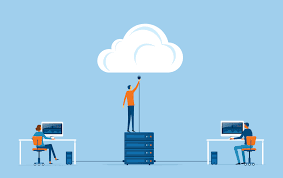What Is Cloud Asset Management? (CAM)

Cloud Asset Management (CAM), is the process by which organizations manage remotely-provisioned cloud infrastructure and resources.
‘Cloud’ Asset Management typically refers to both Infrastructure as a Service (IaaS) and Platform as a Service (PaaS), and is not to be confused with Software as a Service (SaaS). The reason these are differentiated is due to the inherent nature of the business assets being managed — IaaS / PaaS is an extension to IT infrastructure and needs managing as such, whereas SaaS is simply a new way for applications to be purchased and efficiently delivered.
The advent of cloud has been a great enabler for business, offering unparalleled agility for businesses to transform rapidly. However, with such great flexibility and scope also comes a premium price tag, a shift from perpetual asset ‘ownership’ to subscription models and a new side to IT governance to be closely managed, secured and optimized.
The pace of cloud adoption and ability to provision almost limitless resources in minutes, has led businesses to recognize that internal governance and procurement processes also need to be transformed to keep up. New approaches such as creating ‘Cloud Centre of Excellence’ and ‘Finops’ teams are bringing once back-office business functions like procurement, right up to the forefront of business revenue generation.
The key therefore to keeping control of Cloud Asset Management is ensuring that you can see everything, understand everything, and can communicate and operate governance and commercial processes at the new pace of business demand and opportunity.
It is also vital, however, that Cloud Asset Management is not viewed in isolation from the management and optimization of on-prem infrastructure and IT assets. Having a unified understanding, control and clarity of information over enterprise IT assets everywhere, is more important than ever.
Whether your business has a ‘Cloud-first’ strategy or not, managing IT is now a hybrid of both the on-premises, Cloud and SaaS and therefore ITAM / SAM / CAM platforms must offer the full scope to be viable and not another old road-block to the efficient management of total IT.
What are the Challenges of Cloud?

The introduction of cloud-based software, hardware and services means it has never been easier for employees to create unsanctioned technology consumption and cost. This used to be known as ‘Shadow IT’, but today is becoming increasingly ‘business as usual’.
This ability to self-serve technology has created significant issues around visibility, awareness and control increase for IT departments. As a result, the gap between what IT Managers think they know and what is actually true is constantly increasing — which also means that risk and cost increase.
The nature of these risks and costs changes as cloud adoption increases. Historic priorities such as compliance and license management give way to more focus on cost controls, cyber security and technology governance.
Organizations need an understanding of what applications, platforms and infrastructure is being used when, where, how and by whom. However, the challenges of Cloud Asset Management require a different approach to traditional Software Asset Management and ITAM. Traditional SAM focuses on the life cycle of software assets with on-premise licensing models. Extending that approach to cloud simply isn’t appropriate because the two are very different and need different solutions.
To successfully manage cloud assets, key questions need to be addressed:
- Do you have a full understanding of the expensive cloud platforms and infrastructure used across your organization?
- Are you fully aware of the impact on governance and security?
- Do you know where your corporate data reside?
- Do you know how much your organization is spending in the Cloud?
- Are you actually using what you’re paying for?
- Can you easily obtain consumption and usage data and access valuable management reports?
- Can you hold business units accountable for their demand for cloud resources?
- Can you communicate the business purpose, ownership and cloud cost to stakeholders?
- Are you getting value for money from your Cloud investment?
- Can you successfully plan any future Cloud migration?
- Can you easily access all the information you need to ensure a successful transition?
Benefits of Cloud Asset Management (CAM)

An effective Cloud Asset Management program should address the questions above and a Cloud Asset Management solution is essential to delivering a single-source of accurate and trusted intelligence, that can be leveraged to actively control, optimize and communicate effectively with stakeholders across the breadth and depth of the business.
This will enable a host of benefits, including:
- Cost-Optimization of cloud investments.
- Clarity, with a single-source of information covering multi-cloud environments and vendors — no need to become an expert in them all.
- Automation of management processes, proactive alert to security risks and decreased risk of human error.
- Business insight, far beyond the limitations of multiple Cloud portals.
- Efficient Communication, with free access to data and analytics and reporting. Information readily available for all stakeholders, from Cloud architects to commercial teams and senior leadership.
- Granular insight into IaaS and PaaS usage and wastage across your organization to avoid over-spending and negotiate with confidence.
- Unified CAM with on-prem ITAM & SAM can be achieved for a complete end-to-end view of your entire IT ecosystem.
- ‘Single pane of Glass visibility’ with all the information needed to ensure successful migrations to the Cloud.






0 Comments